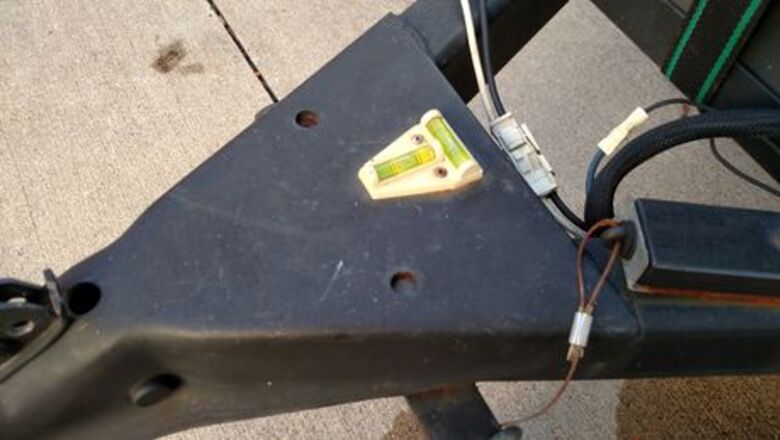
views
Leveling and Location
Position the camper where you would like it to be on your campsite. Do not unhook your tow vehicle yet. When selecting the location, consider things like: Slope of the ground (you can only adjust level so much) Location of trees (don't want to hit roof when raised or beds when pulled out) Proximity to the fire pit (give yourself enough room) Location of electrical hookup if using one (make sure your cord is long enough)
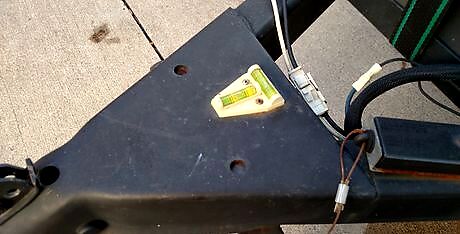
Check side to side level of the camper. If it is already level you can skip to blocking the wheels. Note which side is low. This will be the wheel you will need to level up.
Move the camper either straight forward or back approximately 1.5 feet. This can be difficult to gage at first so it may be helpful to have a spotter watching on the outside until you get the hang of it.
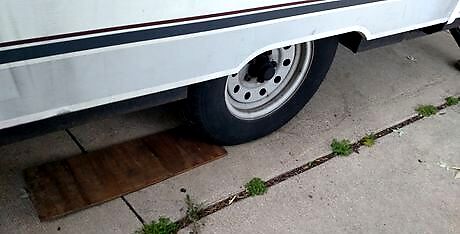
Place a piece of plywood, approximately 1.5 feet long and wider than the width of the camper wheel, in the spot where the wheel was before you moved the camper. Stack more than one piece of wood if the site is particularly unlevel. There are commercial leveling blocks available but plywood works just fine and is probably cheaper.
Move the camper so the wheel is centered on top of the plywood you just placed down.
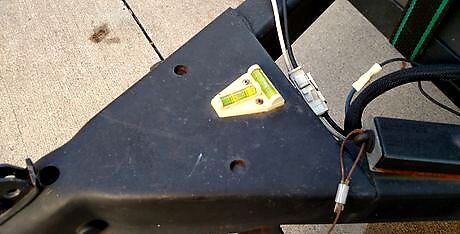
Recheck side to side level. If it is still unlevel repeat the step where you move the camper and then add more plywood. It is good to have a supply of at least three to five pieces of plywood to stack if the spot is particularly unlevel.

Place small blocks of wood in front and behind both wheels once your camper is level side to side. These can be just cut up pieces of two by four. The purpose is to keep the camper from moving when you unhook your tow vehicle as well as while you are camping. Once again, there are commercial blocks available but wood blocks work just fine.
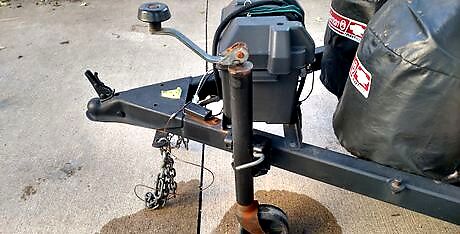
Pull the retaining pin and swing down the camper tongue jack. The tongue jack is at the front end of the camper next to the propane tanks and battery. The retaining pin is located at the midway point on the tongue jack. Make sure the tongue jack is retracted enough to enable it to swing to the full down position. Place a piece of wood underneath the jack wheel if you are camping on sandy or other soft ground to keep it from just sinking into the sand.
Unplug the electrical connection from the tow vehicle to the camper.
Unhook the safety chains.
Raise the camper tongue off of the tow vehicle hitch, by cranking down on the tongue jack until the tongue is fully separated from the tow hitch ball.
Move the tow vehicle away from the camper.
Check level front to back.
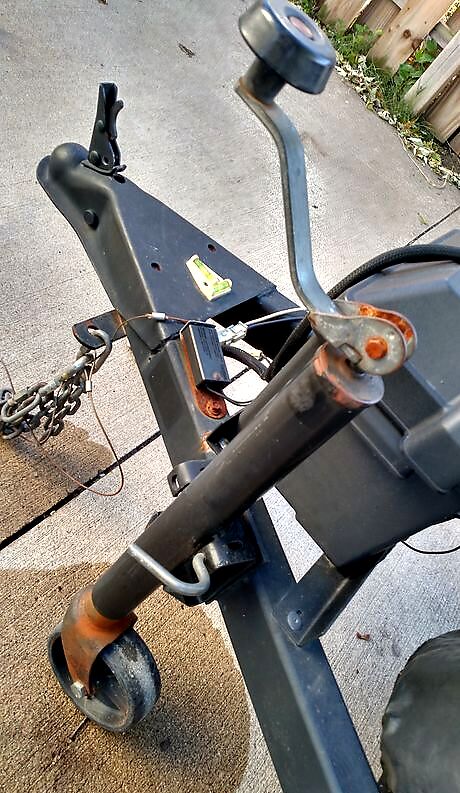
Crank the handle on the tongue jack clockwise to raise the tongue end of the camper and counter clockwise to lower as necessary to achieve level.
Power and Roof
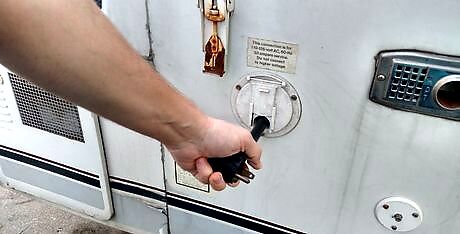
Pull out your campers electrical cord and run it to the electrical hookup on the campsite.
Turn off the breaker at the campsite electrical hookup. The campsite electrical hookup is usually a three foot tall post typically near the back of the campsite. It is safer to plug your campers electrical cord in with the breaker at the hookup off.
Plug your campers plug into the hookup and switch the breaker back on.

Switch the power on (the green 120 V switch) to your camper fridge at the back panel. This is especially important if you have food already in the fridge. Most camper refrigerators will operate on 12V DC battery power (which does not work very well), as well as propane.
Set out your outdoor rug or mat on the door side of the camper if you are going to use one.
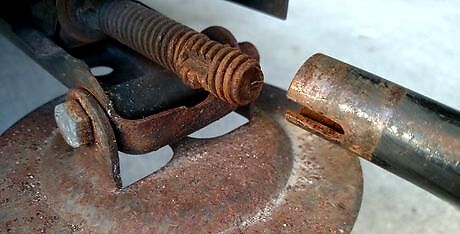
Insert the end of the crank handle into the screw rod end of the camper support.

Crank down the four camper supports near to the ground without them completely touching yet. This is to provide security for the camper (it will not tip) while still allowing the frame to flex while raising the roof.
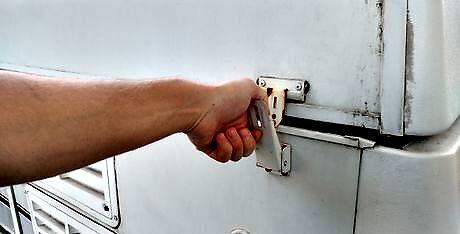
Unlatch the four roof latches by pulling down the latch and pulling away the clip.

Crank up the camper roof. This is done using the same handle that you used to lower the supports. It inserts into the roof crank spot at the back of the camper. Crank clockwise to raise the roof until it will not turn anymore and the roof is at its full height.
Crank down the four camper supports the rest of the way to the ground. You will feel some increased resistance when they contact the ground. Give them just a little snug after that. There is no need to crank too tight. These are located at the four corners of the camper near the bottom.
Remove any items you need from the trunk of your camper if it has one. You will be pulling out the beds soon, and it will be more difficult to remove things after that.
Beds and Canvas
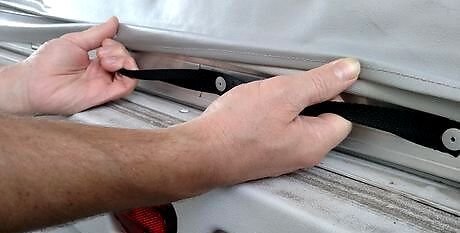
Grasp the handles on the outside end of one of the beds and pull it fully out until you feel a solid stop. As you pull it firmly out stay aware of the position of the canvas to make sure it is not catching on anything. If something doesn't feel right STOP. Check the canvas, pull it away from anything it could catch. Check the inside of the camper to be sure the bed isn't catching on something. It is necessary to pull firmly, but if it's not moving, something is wrong. Don't force it.
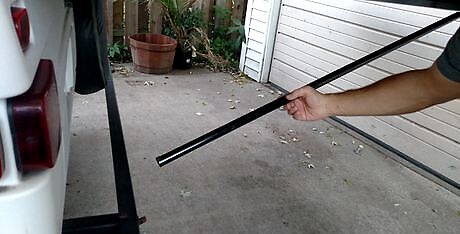
Pull out the free end of the bed support pole which is underneath the bed. Position the free end of the support pole onto the stud on the frame of the camper. Repeat this with the second support pole.
Lift up on the bed to fully latch both supports. You will feel the bed come up as you lift and then it will sit down solidly when you set it down.
Pull out the second bed using the same steps as the first.
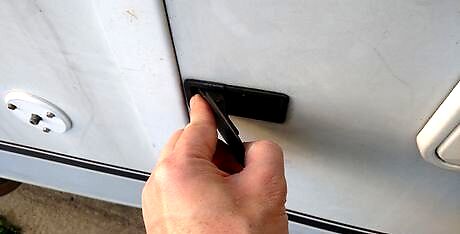
Pull out and twist the two latches to release the slideout (if your camper has one).
Grasp both handles on the slide out lift slightly and pull out until you feel a solid stop.
Attach the velcro on the canvas to the slide out to secure it.
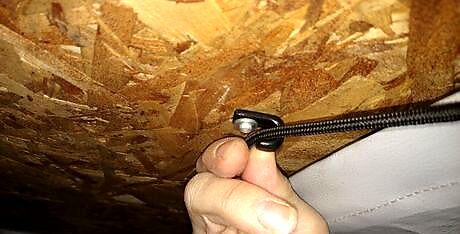
Hook the bungee cords on the bed canvas to the hooks underneath the beds to secure the canvas.
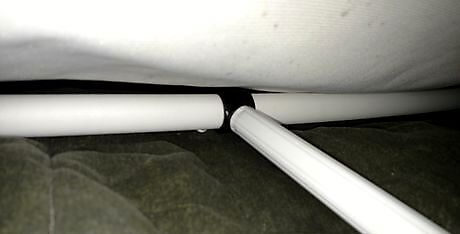
Insert the end of the interior canvas support pole onto the canvas support frame at the end of the bed and lift.
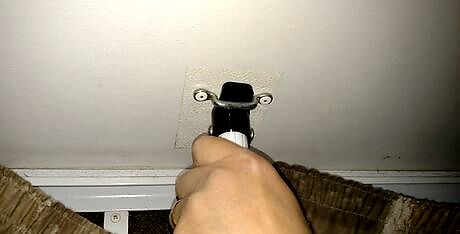
Push out on the pole while positioning the other end into the support clip. Repeat this process with the other bed.
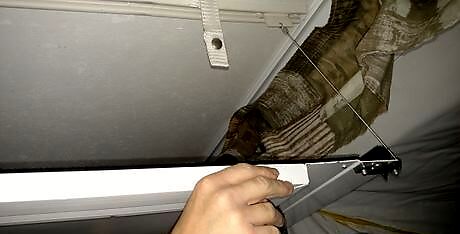
Unsnap the door from the ceiling of the camper and carefully lower it into the door opening.
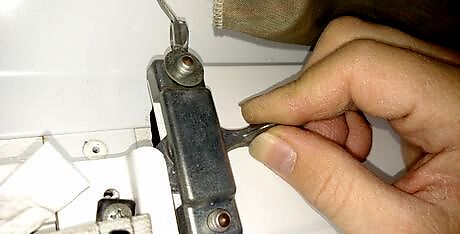
Turn the locking clips on top left and right sides of the door so they engage the slots to hold the door securely.
Attach the velcro on the canvas to the outside of the door frame.
Propane and Water
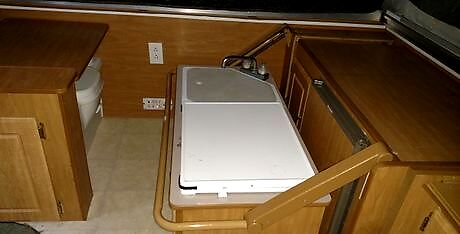
Grab the handle on the galley, lift and slowly lower it into position.
Take the outdoor stove (if you are using one) to the hookup spot on the side of the camper. This spot is on the door side of the camper. The stove sits about waist level.
Angle the front of the stove down while lifting the back and set it on the support while slowly lowering it down. The lower bracket will rest on the side of the camper and will feel secure.
Connect the male end of the propane hose on the outdoor stove to the female propane fitting on the lower frame of the camper.
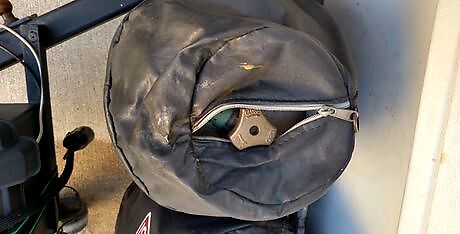
Open the valve on top of the propane tank. Give the propane lines a few minutes to equalize pressure in the system before turning on or using anything requiring propane. The propane tanks are located at the front end of the camper.
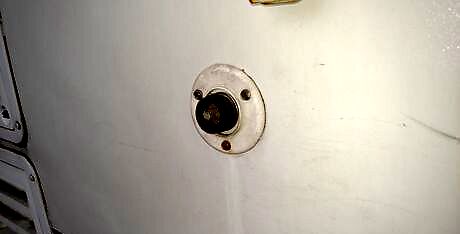
Connect a sanitary water hose from your camper to the water spigot (if there is one on your campsite) and open the valve. The hose hookup spot on the camper is on the side opposite the door side and near the back end. Switch on power to your camper's water pump if you don't have a water spigot and are going to be using your water tank instead. This switch is located inside the camper next to the galley.
Connect a drain hose onto the drain fitting on the outside of the camper. The drain fitting is on the back side of the camper. Your sink drains out of this fitting.
Connect the end of the hose to a grey water tank or bucket.
Water Heater and Pilot
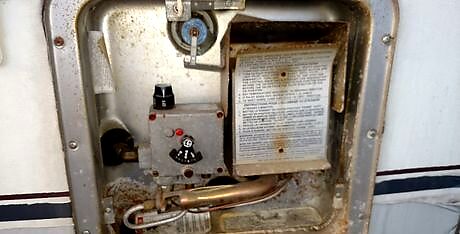
Open the cover on the outside of the camper to access the hot water tank. The access panel is located near the front of the camper on the side opposite the camper door.
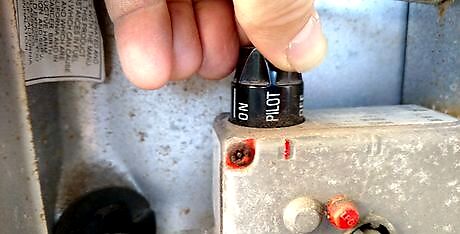
Push down and turn the gas knob to pilot and hold down.
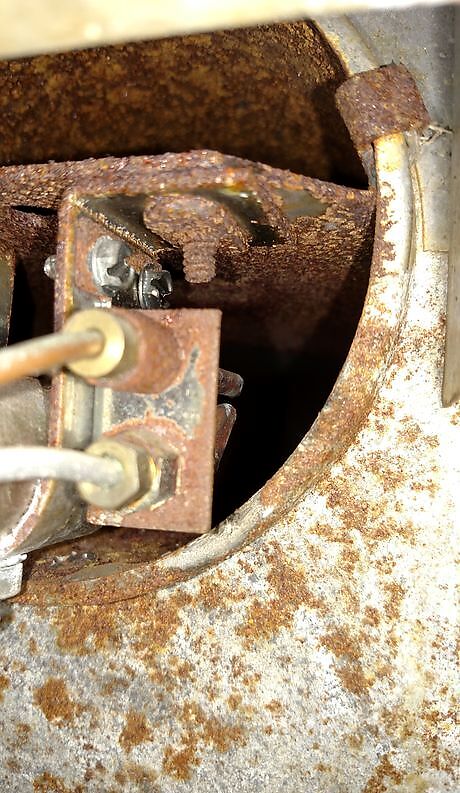
Place a flame on the end of the pilot tube that is pointing to the inside, using a long lighter and wait till the pilot stays lit. Be sure to continue holding down the knob while doing this.
Turn the knob to on. The hot water tank should go into full fire mode and begin heating the water. If the pilot goes out, turn the gas knob to off and wait five minutes before repeating procedure. NEVER light a lighter or bring in an open flame if you smell propane.




















Comments
0 comment